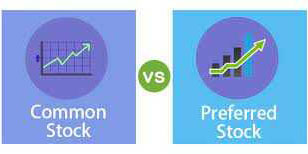As a popular and easy-to-decipher technical indicator, the "head and shoulders" chart pattern has three distinct peaks that form a baseline. The pattern may be employed by a wide range of traders and investors because it appears in various periods. The chart pattern gives critical and apparent entry, stop, and goal levels that make the formation straightforward to apply.
Choosing a Position for the Neckline
The neckline is a level of support or support that brokers use to find the best places to place their orders. The left, head and right shoulder must be located on the chart before the neckline can be accurately placed. Our "neckline"—the dark blue line—is formed on the charts due to this process. In the next part, we'll discuss the neckline's importance. To create our neckline in an inverted head and shoulders pattern, we link a high formed after the left shoulder with a high formed after the head.
How to Trade a Pattern

Traders should be patient and wait for the pattern to finish before entering a trade. For this reason, it is possible that a pattern will never emerge or that a pattern that has already evolved partially will never be completed. No transactions should be made until a pattern's neckline has been broken. After the peak of the right shoulder, we are looking for price action to fall below the neckline.
Price movement over the neckline following the right shoulder formation is required for an inverted head and shoulders pattern. It is possible to begin a transaction once the pattern has been completed. Make a detailed plan for the trade, including all of the variables that might affect your stop or profit objective.
Placing Your Resting Places
After the neckline has been breached, the stops are set slightly above the right shoulder in the classic market top design. As an alternative, the head of the pattern can be employed as a stop, but this is likely to be a considerably greater risk and hence diminishes the return to risk ratio of the pattern.
The halt is located directly below the right shoulder in the inverted pattern. The stop can also be put near the beginning of the pattern, although this increases the trader's risk. Stop loss for this trade would be $104, as seen in the chart.
Choosing Your Financial Goals

The price differential between each shoulder's head and the low point is the pattern's profit goal. After subtracting this difference from the neckline breakout level (a market top), a price objective for the downside is established. Price targets for a market top are established by subtracting the value difference from the neckline breakout price.
The breakout price is then adjusted to account for this discrepancy. At roughly $113.25, the breakthrough price gives us a profit objective of $125.32. As long as the breakthrough is seen, investors may have to wait long before achieving their optimal profit objective. Keeping an eye on your transactions in real-time might assist you in predicting their results.
Why the Head and Shoulders Pattern Is Effective
There is no such thing as a flawless or foolproof design. Several factors can theoretically explain chart patterns.
- Sellers have begun to join the market as the price has fallen from the market high (head), and there has been less aggressive purchasing.
- People who bought in on the final wave higher or who purchased on the right shoulder rally are now facing significant losses after being proven wrong and exiting positions, forcing the price towards the profit goal as the neckline approaches.
- Since the trend has gone down, the right shoulder is unlikely to be broken until the uptrend returns. Thus a stop above the right shoulder is a logical choice.
- People who bought the asset at a bad moment or were mistaken about its value will be compelled to sell their positions, leading to an upswing similar to what was seen during a recent topping pattern.
- Many traders will be compelled to abandon positions at the neckline for the stock to reach the price goal.
The Verdict
Patterns of the head and shoulders may be observed visually in all periods. Although the pattern might be subjective at times, it gives entry points, stops, and profit goals, making it simple to adopt a trading strategy. The design consists of three parts: a left shoulder, a head, and a third shoulder on the right.
Breaking above or below the right shoulder is the most specific entry point. To calculate the profit objective, remove or add the pattern's high and low values from the breakout price. Despite the system's flaws, it does offer a way to trade the markets by following rational price moves.



